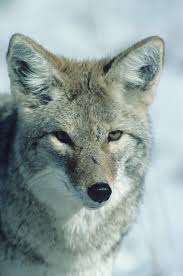Top 10 Most Dangerous Animals in the World
Nature is complete with the various creatures, especially animals. There are friendly animals and deadly and very dangerous animals. Even with the special advantage of humans in thinking, comparing with other beings, it is frightening the danger that some animals present.
Many of them are able to kill men efficiently and quickly, so this selection of the 10 most dangerous animals in the world is a warning for all the circumstances to face, between dangerous and cruel.
10.Komodo dragon
It is the largest species of lizard and is called the Komodo dragon, present in the islands of Indonesia. The komodo dragon that occupies the tenth position among the most dangerous animals in the world is lethal with very dangerous and poisonous sting.
The poison in the bite generates an increase in the blood flow of the victim, thinning of the blood and still muscular paralysis, with state of shock and lost consciousness. The behavior is aggressive and uncertain, and in dangerous situation demonstrates aggression with panting and bald tail. There are cases of attacks and deaths of men even without offense.
9. Polar Bear
This animal has a huge leg that can cut the human head. Even though it is a beautiful animal, it is not innocent but conscious and can attack the danger signal. With hunger, the polar bear is scary and unpredictable, killing and eating humans. Its presence is common in the Arctic Circle.
8. Blue Ring Dust
This animal is venomous and its characteristic is tiny and is surrounded by blue balls, presenting beauty, although it is lethal. It remains in the tidal areas of Africa to Japan, with much poison capable of killing humans, to which there is no antidote. A single dose is capable of killing 20 men.In the case of the bite of the octopus surrounded by blue rings it is necessary to resuscitate the cardiac pulmonary form of the victim, since there is total paralysis with inability to breathe. The poison is 10,000 times worse than cyanide.
7. Hippo
This animal is the third largest mammal, which is behind the elephant and rhinoceros. They are in Africa and are one of the biggest human deaths on the continent. They are very aggressive and moody.The weight is around 8 tons, can shoot at 18 miles per hour. Commonly, crocodiles are the target of aggression demonstrating their courage and wild instinct.
6. White Shark
The white shark is a silent killer and is animated with blood by the water. Extremely dangerous, it has 300 sharp teeth to bite, and possesses an impressive feel of the electric field of the movement of the animals.The attack is independent and water conditions are responsible for most of the attacks against humans. The animal's swimming is peaceful, but they are very fast and furious.


















































